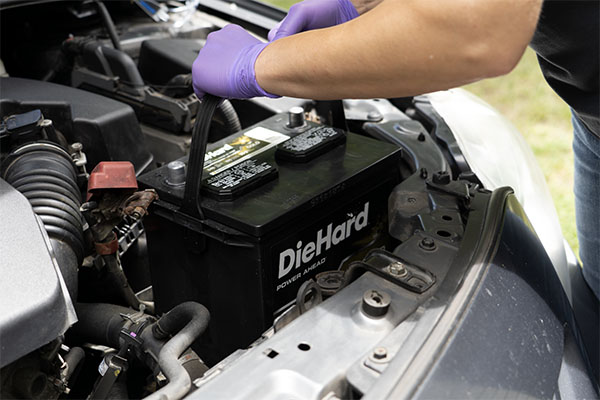You've probably seen the ads: “Bolt on our cold air intake for a super-affordable price and gain massive horsepower!!!" (cue a massive burnout followed by a Michael Bay background explosion) Then again, you might have also read forums where people say a high-flow air filter offers the same benefit of “one or two horsepower" for a much lower price. Who is right? Are cold air intakes worth the money, and do they provide real horsepower gains? There's only one way to find out.
Why a Cold Air Intake?
Source | Andy Jensen
If you're new to modifying vehicles, a cold air intake is one of the first mods many people make for several reasons. They start under $100 and max out around $500, which even then is about one-fifth of a turbocharger kit. Cold air intakes typically install in about a half hour, using basic hand tools and very little know-how. They don't void warranties, and you can easily go back to stock if you sell your vehicle. Plus, the advertising makes it seem like easy horsepower.
So now you're probably asking, “If they're so great, why doesn't the factory make these?" Good question, but it's mainly about money. The OEM factory air intake needs to be as cheaply made as possible to keep costs down. It's also more focused on meeting emissions requirements, keeping engine sounds quiet and reliably lasting years under the hood. Horsepower comes dead last. On the other hand, aftermarket companies dedicate their R&D to only a small product range, meaning aftermarket intakes can be over-built, even if that means making them more expensive. With the focus on increasing power first, cold air intakes are usually noisier than stock intakes, but many enthusiasts don't see that as a problem.
Finding Stock Horsepower
For this test, we used a stock drivetrain 2016 Scion FR-S. It's a badge-engineered version of the Subaru BRZ, so it shares the same drivetrain: Subaru's FA20 2.0L boxer four cylinder. It's even got the factory style paper air filter, so it should be making 200 horsepower at 7,000 RPM.
The test started with the stock intake, and the car on a dynamometer. The “dyno" measures the vehicle's power output at the wheels (technically, it measures torque and engine speed to calculate horsepower). This is the power after the engine spins the rest of the drivetrain like the transmission, driveshaft, axles and wheels. Horsepower at the wheels is generally 12 to 20% less than advertised, mainly due to the weight of all those rotating parts.
Measuring horsepower on the dyno. Source | Andy Jensen
We controlled all the variables possible, minus the weather. The car used the same 93 octane fuel both times, and tires were 35 PSI cold, and of course the same dyno and techs — the experienced guys at Abel Racing.
A variable did enter as the day wore on, though. The first dyno pulls were at 9:00 am and a breezy 53 degrees Fahrenheit. However, the guys were busy with an appointment tuning an 1,100+ horsepower twin turbo Silverado, so we didn't get another set of runs until 3:00 pm, when the temps hit a warm 74 degrees. Warmer air has less oxygen density, so there is a minute loss of measured power here due to increased temps, but probably only around 3 or 4 horsepower.
With back to back pulls in the morning, the stock FR-S managed 158.91 peak horsepower at the wheels, approximating the expected 20% drivetrain loss. Checking with stock FR-S/BRZ dyno sheets online, this is right in the middle of what to expect from a stock car. It's also why a stock FR-S/BRZ won't want to drag race a minivan.
Installing the Intake
The intake used in this test is an AEM electronically tuned intake system. AEM says this intake is moderate difficulty with a 90 minute installation time, but it was way easier than that. The install required only a few tools:
- Wrench
- Fat blade screwdriver
- 10mm socket & ratchet
- Allen wrench
It took a total of 33 minutes from lifting the hood to closing it job completed. AEM reported picking up an impressive 10 horsepower at the wheels from just this one mod, but their car measured an unusually low 135 horsepower when stock.
Cold Air Intake Results

Dynamometer printout showing peak horsepower on the first run with the stock intake. Source | Andy Jensen
The average of two runs with the AEM intake produced a best of 163.31 at the wheels. Doing some quick third grade math (okay, it was a calculator), that's a gain of 4.4 horsepower. The warmer weather was certainly a factor, making the real gain closer to 7 or 8 horsepower if temps had stayed in the 50s.
That's not the 10 peak horsepower we were hoping for, but there were more gains “under the curve" or aside from the peak number. Gains below 5,000 RPM were around 2 horsepower at best, but above 5,000 raises the bar another 4 or 5 horsepower at certain points below 7,000 RPM. While the redline is higher, the FA20 only loses steam beyond that number.
Of course, dyno numbers and graphs are more useful than just showing peak numbers. It also showed the air/fuel ratio on the runs, ideally a 14.7:1 for gas engines. The FA20 ran “rich," heavy on fuel for safety, at higher RPMs. Posting a 11.6:1 when stock, it was even richer 11.4:1 with the intake.
“It needs a tune," summarized dyno operator and shop owner Andrei Mitine.
This backs up what DSPORT Magazine found when dyno testing various mods on their project FR-S. The ECM controls the electronic throttle on modern vehicles and partly closes the throttle if more than the expected amount of air is detected. This limits un-tuned mods to about a 5% gain.
In conclusion, the AEM intake did show an improvement in horsepower at the wheels, in peak horsepower and lower in the power band, just not as much as their test car. Vehicles and dynos will vary, so you might see more or less results, even with the same intake on a similar car. Either way, that's noticeably more than the “1 horsepower gain" that online critics say cold air intakes are worth. If the high flow air filter isn't enough for you, step it up to a real cold air intake. And maybe a tune as well.
Have you installed a cold air intake? Share you experiences in the comments.









